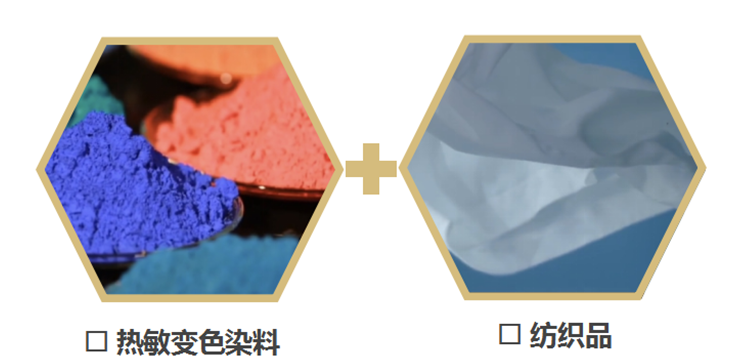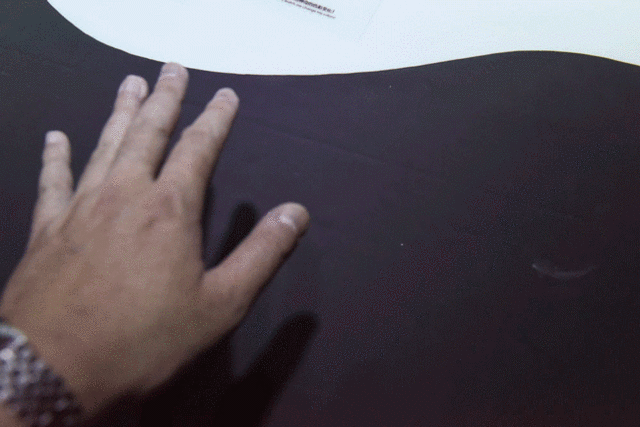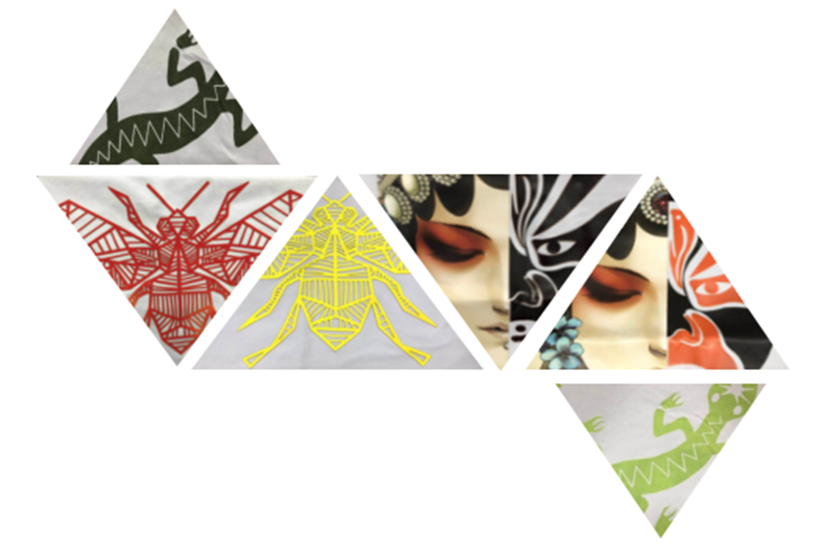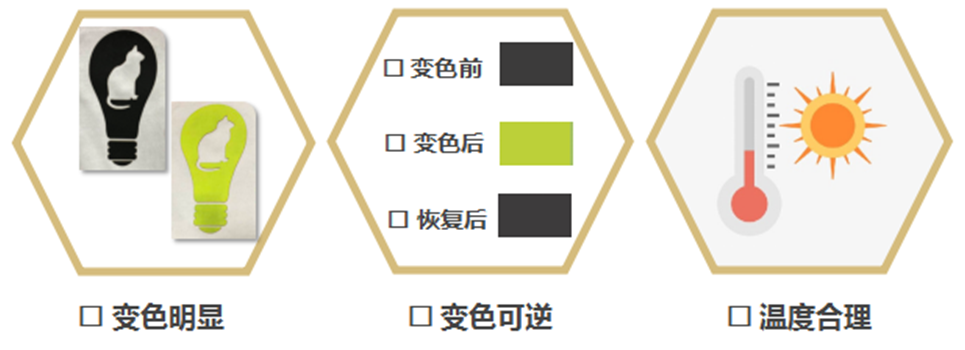Do you want to wear a piece of clothing with different colors?
Create different tricks?
Learn about heat-sensitive color-changing textiles!

It includes two parts: thermochromic dyes and textiles

Thermochromic dye
In terms of types, it is divided into
Inorganic, organic and liquid crystal types

Although the stability of organic color-changing dyes is relatively poor
But it is less effective than inorganic compounds with high toxicity
Compared with expensive crystalline dyes
Relatively affordable and effective
Organic color-changing dyes are currently used
The color changing principle is divided into two categories
Stereoisomerism, molecular rearrangement…. .
Thecolor-changingsystemconsistsofleucoagent,developerandsolvent
Temperaturerise
Thedeveloperrequireselectrons
leucoagentexistsThereareelectronics
Sotheelectrontransportfromtheleucoagenttothedeveloperbegins
Afterthecolorchangeagentcompletesthecolorchange
Thebirthofcolor-changingdye
Discoloration “Iron What role do “triangles” play in the color-changing system?

By blending the contents of the three
You can get the desired discoloration effect

With color-changing dye
Combined with textiles through printing, finishing
Or directly made into color-changing fiber
There are currently heat-changing textiles on the market

What are the characteristics of good color-changing textiles
The color change effect is obvious;
The color-changing effect is reversible and can be used repeatedly;
The color changing temperature is reasonable, and the color change can be completed during daily wear


How to choose thermal color-changing clothing
“One look, two smells, three touches, four maintenance”
01
Look
Read clothing labels carefully. Qualified product description labels should include at least the following seven aspects :
Manufacturer’s name and address (to facilitate accountability);
Product name (Such as: color-changing T-shirts, etc.);
Product model and specifications (mainly marked with height and net bust);
Raw material composition and content (such as 100% cotton, 90% cotton/10% spandex, etc.);
Maintenance method ( Including instructions on washing, drying, ironing methods, etc.);
Executed product standards;
Safety categories (divided into Category A infant products, Category B products with direct contact with skin, Category C products with indirect contact with skin);
Pay attention to its description of textile functionality such as heat-sensitive discoloration. Test reports from formal testing agencies are more reliable.
02
Smell
Smell carefully when you get the clothes to see if there is any unpleasant odor. If there is any odor, it is most likely caused by excessive pH value or chemical substances such as dyes or additives remaining on the clothes during the production process. .
03
touch
Most of the thermochromic textiles currently on sale have discoloration temperatures between 28 and 35°C. You can simply touch the discolored area with your hand to see if the print can change color, and whether it can return to the original color after you stop touching it, to judge the discoloration effect of the textile.
04
Maintenance
Compared with ordinary dyes, the stability of thermochromic dyes is relatively poor. Therefore, after purchasing thermochromic clothing, you must carefully read the maintenance methods on the label or wash label to maintain it, so as to ensure that the color-changing clothing “lasts forever.”
data-track=”59″ style=”text-align: left;”>Safety categories (divided into Category A infant products, Category B products with direct contact with skin, Category C products with indirect contact with skin);
Pay attention to its description of textile functionality such as heat-sensitive discoloration. Test reports from formal testing agencies are more reliable.
02
Smell
Smell carefully when you get the clothes to see if there is any unpleasant odor. If there is any odor, it is most likely caused by excessive pH value or chemical substances such as dyes or additives remaining on the clothes during the production process. .
03
touch
Most of the thermochromic textiles currently on sale have discoloration temperatures between 28 and 35°C. You can simply touch the discolored area with your hand to see if the print can change color, and whether it can return to the original color after you stop touching it, to judge the discoloration effect of the textile.
04
Maintenance
Compared with ordinary dyes, the stability of thermochromic dyes is relatively poor. Therefore, after purchasing thermochromic clothing, you must carefully read the maintenance methods on the label or wash label to maintain it, so as to ensure that the color-changing clothing “lasts forever.”






